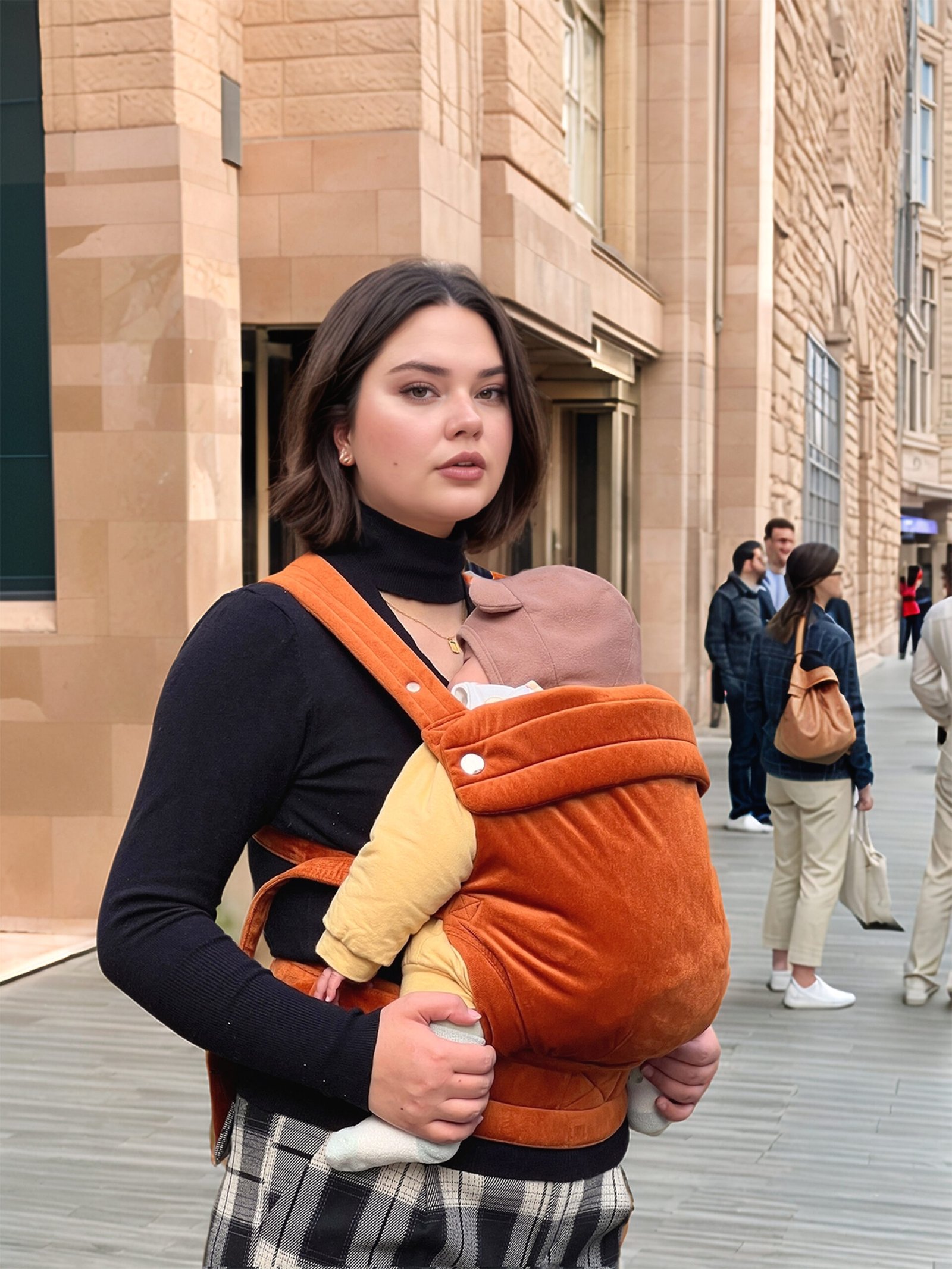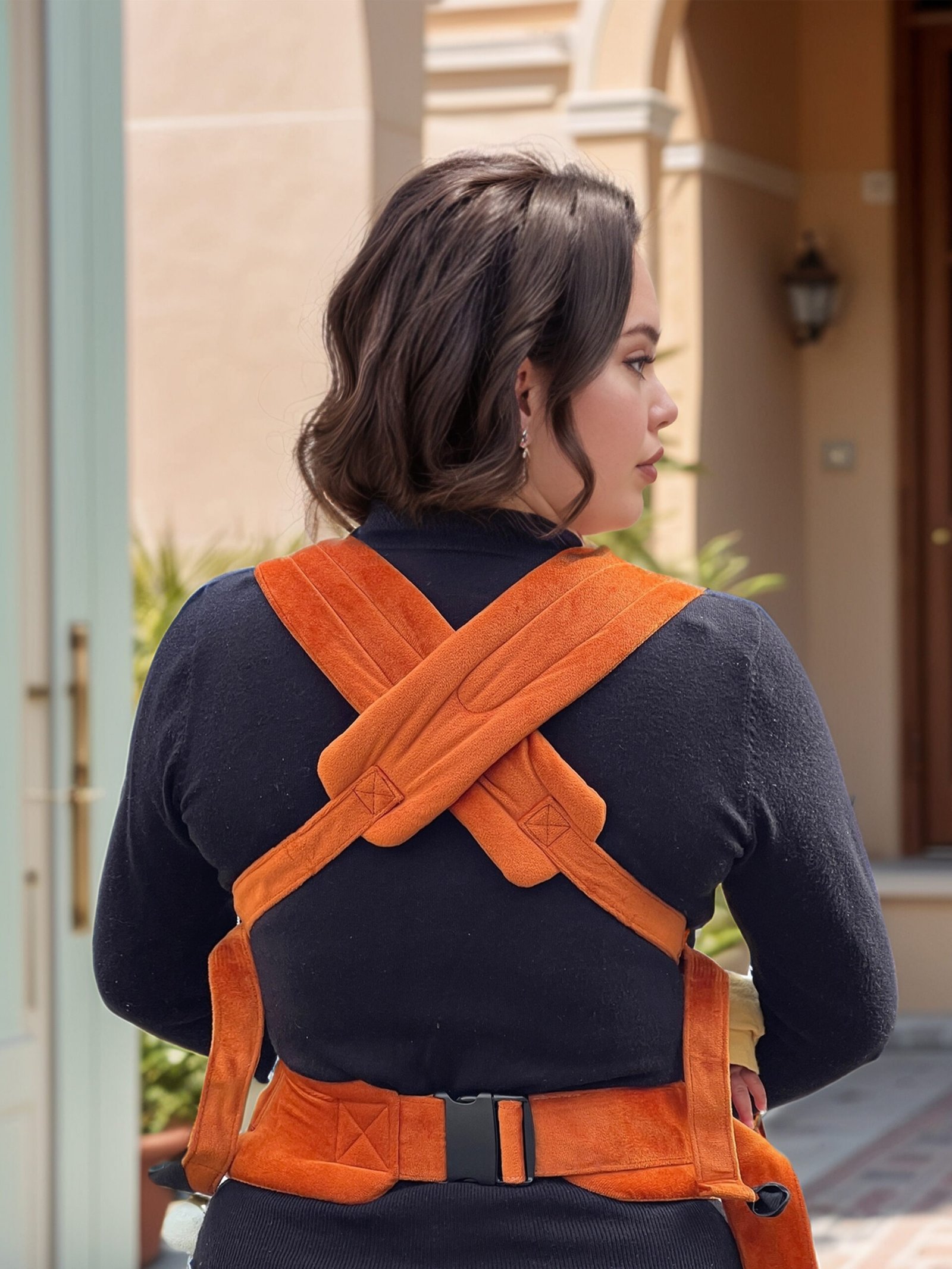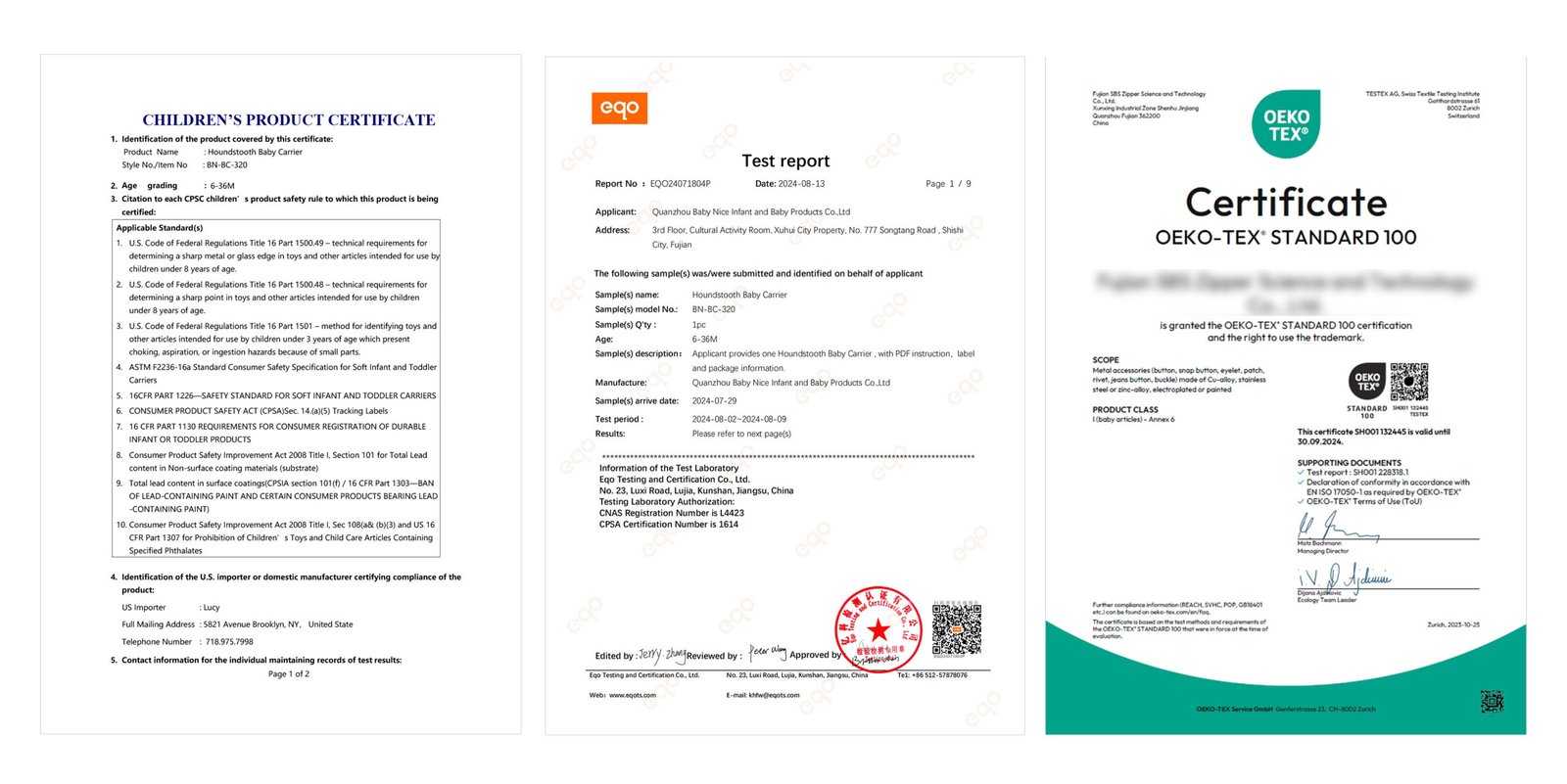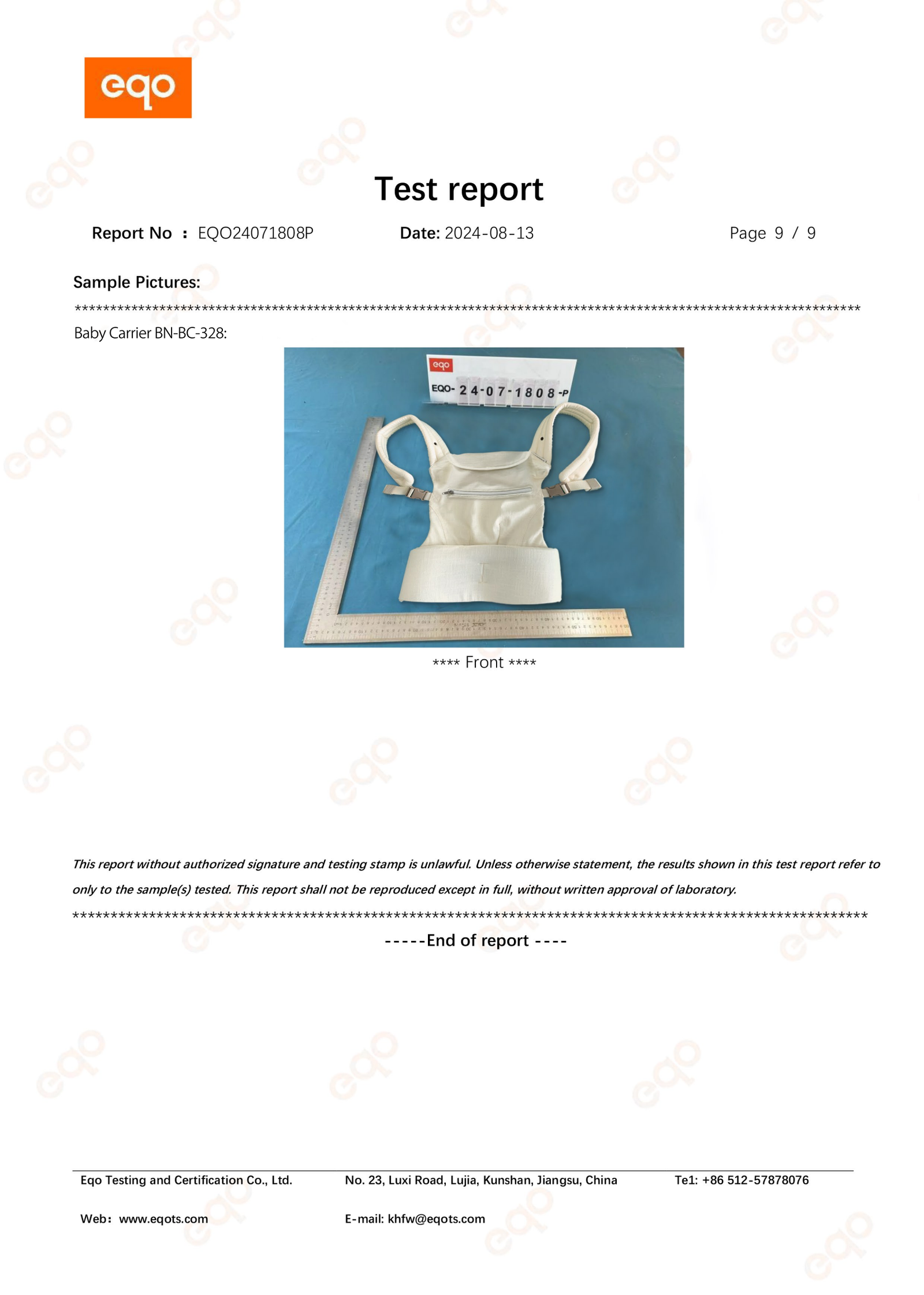Parents want comfort. Buyers want safety and real value. But let’s be honest: the term “ergonomic” gets thrown around like glitter at a toddler’s birthday party. If you’re a brand buyer, Amazon seller, or KOL sourcing baby products, you need to know which features truly define an ergonomic baby carrier—and which ones are just marketing fluff.
A truly ergonomic baby carrier must support healthy hip development in babies (M-position), reduce pressure on the adult’s back and shoulders, adapt to different body sizes, suit multiple baby stages, and pass certifications like EN13209 and ASTM F2236. Don’t just trust the photos—look at the shoulder strap structure, the seat width, spinal support, and breathable materials.
Sounds complicated? Don’t worry. I’ll break it down into clear, practical points you can actually use when sourcing.
What Does “Ergonomic” Actually Mean in a Baby Carrier?
Ergonomics is not a fancy label—it’s a serious design principle. For baby carriers, it means:
Supporting the baby’s development, especially spine and hips
Reducing strain for the adult wearing the carrier
Fitting various body types
Adjusting to active, real-life use, not just photo poses
Non-ergonomic carriers can cause discomfort and, worse, lead to developmental issues like hip dysplasia (DDH).
📌 According to global data, around 1.4% of infants are affected by DDH (PubMed Study, 2024), and the International Hip Dysplasia Institute notes that 1 in 10 newborns have hip instability, and 1 in 100 require treatment (hipdysplasia.org).
Why Is Ergonomic Design Crucial for Both Baby and Parent?
For the baby:
- The carrier should support an M-shaped leg position (knees higher than bum) to avoid pressure on the hips.
- It should also maintain a natural C-shaped spine—not straight or curved backward.
- Must adapt to baby growth from newborn to toddler stages.
For the adult:
- The carrier should distribute weight evenly across the shoulders, back, and hips.
- Adjustability matters—both Mom and Dad should use the same carrier comfortably.
Bottom line: ergonomic design isn’t a nice-to-have. It’s a must-have.
Key Design Features of a Truly Ergonomic Baby Carrier
Here are the core technical features buyers must look for:
1. M-Position Seat Support
The carrier must allow the baby’s knees to be higher than their bottom—not dangling.
Proper seat width must support the thighs from knee to knee.
2. Spine Support (C-Shape)
Newborns need full spinal support. The back panel should follow the baby’s natural curve—not force it flat.
Use soft but structured materials inside the back panel.
3. Wide Waistband & Padded Shoulder Straps
A quality ergonomic carrier shifts the baby’s weight to the adult’s hips.
Look for wide waistbands with reinforced stitching, and shoulder straps with memory foam or thick padding.
4. Multi-Point Adjustability
Straps should be adjustable for different body types. Parents come in all shapes—one-size-fits-all doesn’t cut it.
5. Breathable & Baby-Friendly Materials
Babies overheat easily. Use air-permeable fabrics like cotton blends or 3D mesh.
Quick Checklist to Test If a Carrier Is Ergonomic
| Criteria | Standard | Pass? |
|---|---|---|
| M-position seat | Knee-to-knee support present? | ✅ / ❌ |
| Spinal support | Maintains C-curve naturally? | ✅ / ❌ |
| Shoulder straps | Thick and padded enough? | ✅ / ❌ |
| Waistband | Wide, strong, adjustable? | ✅ / ❌ |
| Fabric | Breathable & OEKO-TEX certified? | ✅ / ❌ |
| Carry positions | Includes front, side, and back? | ✅ / ❌ |
| Certifications | EN13209 / ASTM F2236 available? | ✅ / ❌ |
🧠 Tip: Always request the original test report, not just a screenshot or old PDF.
Matching Carrier Type to Baby’s Growth Stage
Babies change fast—your product lineup should too.
| Age | Carrier Requirements | Recommended Type |
|---|---|---|
| 0–4 months | Neck support, soft spine panel | Wrap or hybrid |
| 4–12 months | Flexibility, better weight support | Structured carrier |
| 12+ months | Sturdier build, hip load distribution | Backpack-style carrier |
Carrier Types: Pros and Cons for Ergonomic Use
| Type | Pros | Cons |
|---|---|---|
| Wrap Carrier | Soft, cuddly, good for newborns | Difficult to wear correctly |
| Structured Carrier | Multiple positions, good support | Slightly rigid for newborns |
| Mei Tai | Adjustable, semi-structured | Less known in the West |
| Backpack Carrier | Great for heavy toddlers | Not suitable for infants |
Certifications to Verify True Ergonomic Design
Buyers should look for internationally recognized certifications:
EN13209-2:2015 – for soft-structured carriers up to 15 kg (EN13209-2 Details)
EN13209-1:2022 – for framed backpack-style carriers over 6 months (EN13209-1 Details)
ASTM F2236 – the American structural and safety standard
OEKO-TEX – for fabric and skin-contact material safety
📌 Since 2017, compliance with EN13209-2 is mandatory for all baby carriers sold in the EU (source).
Warning Signs of Fake “Ergonomic” Carriers
Watch out for these red flags:
Narrow seat—legs dangle instead of supported
No neck support—baby’s head slumps
Heavy plastic material—non-breathable and scratchy
No certifications or outdated reports
Flashy designs but poor inner structure
👉 Buyer tip: Structure matters more than color. Pretty ≠ ergonomic.
How Baby Nice Ensures Real Ergonomic Design in Our Factory
At Baby Nice, we apply a strict 3-step process:
- CAD structure modeling based on real human data
- Prototype testing on baby mannequins and movement simulation
- 3rd-party lab verification with EN13209 and ASTM F2236 reports for each product line
We also conduct batch testing and pressure-load assessments in-house to ensure every carrier meets the ergonomic standard—not just the first sample.
6 Must-Ask Questions When Sourcing Ergonomic Carriers
- What certifications does this carrier have—EN or ASTM?
- What carry positions does it support (front, side, back)?
- Is it suitable for newborns (0–6 months)?
- What is the seat width (in cm)? Is it knee-to-knee?
- What fabric is used? Does it have OEKO-TEX certification?
- Can you provide the original lab reports tied to this batch?
More Related Questions
What kinds of brands are best suited for ergonomic baby carriers?
Clean, minimalist, or nature-inspired brands tend to pair well.
Which customer profiles care most about ergonomic carriers?
Experienced moms, health-conscious buyers, parenting KOLs.
Can I customize these carriers with my brand logo?
Yes, but the logo must not disrupt structural areas like shoulder straps or waistbands.
Conclusion
Ergonomics is not a buzzword—it’s a safety promise.
When choosing baby carriers, structure matters more than color, and function matters more than flair. For buyers, it’s simple: know what to look for, and ask the right questions.
Ready to Source Certified Ergonomic Baby Carriers?
Looking for certified ergonomic baby carriers designed for modern parents?
We’re not just a supplier—we’re the factory. With EN & ASTM-certified products, custom branding options, and flexible MOQ, Baby Nice helps you launch confidently.
📧 Email us at: sales@nicebabyfty.com
🌐 Explore our B2B services: www.nicebabyfty.com
Let’s build your baby brand with safety and style.







